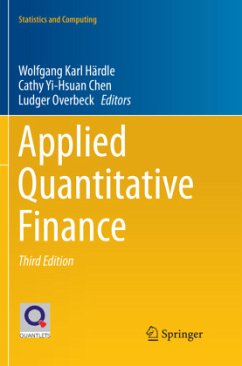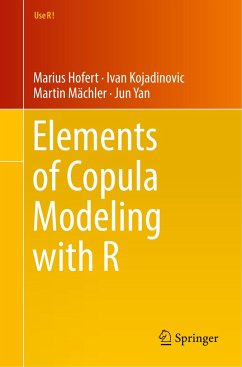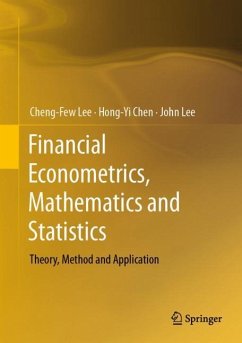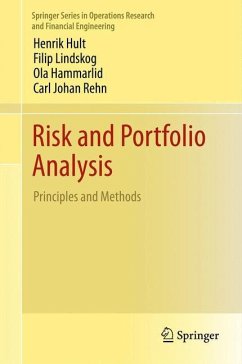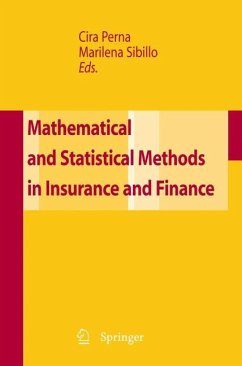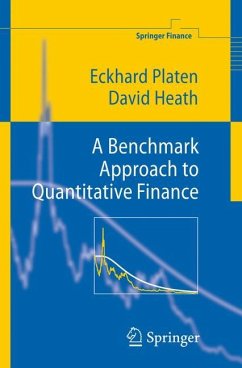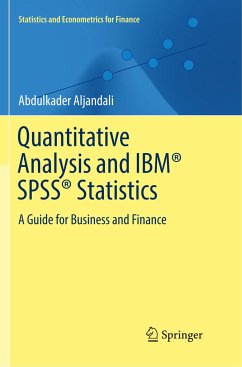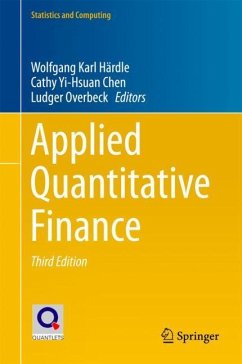
Applied Quantitative Finance

PAYBACK Punkte
33 °P sammeln!
This volume provides practical solutions and introduces recent theoretical developments in risk management, pricing of credit derivatives, quantification of volatility and copula modeling. This third edition is devoted to modern risk analysis based on quantitative methods and textual analytics to meet the current challenges in banking and finance. It includes 14 new contributions and presents a comprehensive, state-of-the-art treatment of cutting-edge methods and topics, such as collateralized debt obligations, the high-frequency analysis of market liquidity, and realized volatility.The book i...
This volume provides practical solutions and introduces recent theoretical developments in risk management, pricing of credit derivatives, quantification of volatility and copula modeling. This third edition is devoted to modern risk analysis based on quantitative methods and textual analytics to meet the current challenges in banking and finance. It includes 14 new contributions and presents a comprehensive, state-of-the-art treatment of cutting-edge methods and topics, such as collateralized debt obligations, the high-frequency analysis of market liquidity, and realized volatility.
The book is divided into three parts: Part 1 revisits important market risk issues, while Part 2 introduces novel concepts in credit risk and its management along with updated quantitative methods. The third part discusses the dynamics of risk management and includes risk analysis of energy markets and for cryptocurrencies. Digital assets, such as blockchain-based currencies, have become popular b
ut are theoretically challenging when based on conventional methods. Among others, it introduces a modern text-mining method called dynamic topic modeling in detail and applies it to the message board of Bitcoins.
The unique synthesis of theory and practice supported by computational tools is reflected not only in the selection of topics, but also in the fine balance of scientific contributions on practical implementation and theoretical concepts. This link between theory and practice offers theoreticians insights into considerations of applicability and, vice versa, provides practitioners convenient access to new techniques in quantitative finance. Hence the book will appeal both to researchers, including master and PhD students, and practitioners, such as financial engineers. The results presented in the book are fully reproducible and all quantlets needed for calculations are provided on an accompanying website.
The Quantlet platform quantlet.de, quantlet.com, quantlet.org is an integrated QuantNet environment consisting of different types of statistics-related documents and program codes. Its goal is to promote reproducibility and offer a platform for sharing validated knowledge native to the social web. QuantNet and the corresponding Data-Driven Documents-based visualization allows readers to reproduce the tables, pictures and calculations inside this Springer book.
The book is divided into three parts: Part 1 revisits important market risk issues, while Part 2 introduces novel concepts in credit risk and its management along with updated quantitative methods. The third part discusses the dynamics of risk management and includes risk analysis of energy markets and for cryptocurrencies. Digital assets, such as blockchain-based currencies, have become popular b
ut are theoretically challenging when based on conventional methods. Among others, it introduces a modern text-mining method called dynamic topic modeling in detail and applies it to the message board of Bitcoins.
The unique synthesis of theory and practice supported by computational tools is reflected not only in the selection of topics, but also in the fine balance of scientific contributions on practical implementation and theoretical concepts. This link between theory and practice offers theoreticians insights into considerations of applicability and, vice versa, provides practitioners convenient access to new techniques in quantitative finance. Hence the book will appeal both to researchers, including master and PhD students, and practitioners, such as financial engineers. The results presented in the book are fully reproducible and all quantlets needed for calculations are provided on an accompanying website.
The Quantlet platform quantlet.de, quantlet.com, quantlet.org is an integrated QuantNet environment consisting of different types of statistics-related documents and program codes. Its goal is to promote reproducibility and offer a platform for sharing validated knowledge native to the social web. QuantNet and the corresponding Data-Driven Documents-based visualization allows readers to reproduce the tables, pictures and calculations inside this Springer book.





